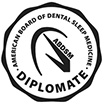
There are various types of flaws that can cause a person to feel self-conscious about their appearance. Whether it is chips and cracks caused by sports-related injuries, stains and discoloration left behind by years of drinking coffee, or gapped and misshapen teeth that are the result of improper tooth development, finding a solution to conceal these imperfections can feel defeating. However, with cosmetic dentistry continuing to increase in popularity, patients have the option to choose between custom veneers or direct bonding. Find out more about each and which one might be best for your unique needs.
Dental Veneers: A “Permanent” Way to Conceal Flaws
Dental veneers are unlike any other cosmetic dental treatment simply because they are viewed as “permanent.”
The process of receiving these restorations requires that a small bit of tooth enamel be removed from the surfaces of treated teeth. Although the veneers will one day need to be replaced, the altering of a person’s tooth enamel cannot be undone, resulting in a lifelong commitment.
Although that might seem like a deterrent, the reality is that these restorations offer a one-of-a-kind solution to concealing imperfections of all types. As thin sheaths of commonly used porcelain, they are customized according to your desired shape, size, and color to fit over the front-facing areas of teeth, effectively masking the defects to produce a flawless smile.
With proper care, veneers can last for 10-15 years, making them a worthwhile option for anyone who prefers a longer-lasting cosmetic solution.
Direct Bonding: The Reversible Method of Hiding Imperfections
Direct bonding on the other hand offers similar results but in a much less invasive way.
Consisting of composite resin that is matched to your enamel’s shade, your cosmetic dentist will apply it directly onto the front surface of a tooth and begin to cover up the imperfection. Shaping the resin will ensure it lays flat and blends in once cured.
The process does not require the removal of tooth enamel but instead allows for a reversible form of treatment that you can undo should you choose to pursue another service in the future.
With direct bonding, the results can last for 5-7 years before needing to be replaced, which can be a great solution if you don’t want to permanently commit to any one type of cosmetic treatment. Also, it is considered much less expensive than veneers, which is a bonus if you are thinking about your budget.
There is no wrong answer when it comes to choosing between veneers or direct bonding. However, you’ll need to compare the cost, process, and longevity of each to determine which option is right for you.
About the Practice
The dental team at Indy Dental Group wants you to feel confident about your smile. Committed to providing exceptional dental services, our ability to conceal imperfections with veneers and direct bonding allows us to provide options to our patients that they may not have at another dental office. Our skilled dental team will be happy to discuss these services with you as well as discuss the kind of results you can expect to see with both veneers and direct bonding. If you’re interested in learning which option will help you conceal your smile imperfections, contact us at (317) 846-6125.


























